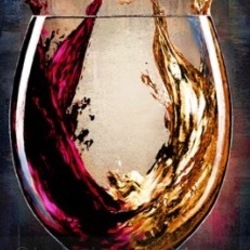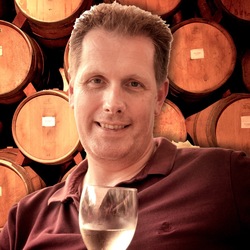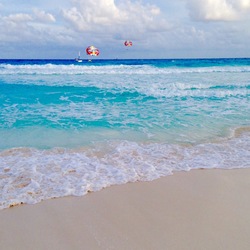Paddock Wood Brewing Co.
Château Brane-Cantenac
Grand Cru Classé en 1855 Margaux Red Bordeaux Blend 2005

Bedrock Wine Co.
Griffin's Lair Vineyard Syrah 2013
Still coming together. Can't decide if this is lean, elegant and slightly feral or big, fruity and concentrated. Tonight, it began as the first and opened into the later. Lovely blackberry and plum notes to go along with bacon fat and a touch of wood spice and vanilla. Will love to see this mature. I continue to kick myself for opening Bedrock early but yet I still do it. — 10 years ago
Bedrock Wine Co.
Evangelho Vineyard Heritage Zinfandel Blend 2013
A good amount of wood is showing up in this wine... Not bad. Needs time to integrate. — 10 years ago
Moss Wood
Margaret River Cabernet Sauvignon 2004
Wow, a wine night to remember. Thanks Taylor and co! — 10 years ago
Bedrock Wine Co.
Saitone Ranch Vineyard Zinfandel 2011
A saturated reddish-purple, the '11 Bedrock Zinfandel 'Saitone Ranch Vineyard' emits characteristic brambly clove spice, sappy dark cherry and oak aromas with some violet undertones. Great depth of cherry-cola, wood smoke and white pepper flavors on the mouth with balanced acidity that keeps the sweet fruit in line. A rich finish with stunning depth and length. — 11 years ago
Paddock Wood Brewing Co.
Bête Noire Black Ale
Wow, snuck a delicious Sask ale on here! This is closer to a porter with a distinct toasted malt flavour. Drink at cellar temp, don't be a knob! — 12 years ago
Judge Palmer
Beckstoffer Georges III Cabernet Sauvignon 2011
Wifey is in raptures about this tonight. Very exotic wood treatment. Shitty vintage, but boy, Palmer and Co pulled off some acrobatics here. — 8 years ago
Garage Wine Co.
Lot #51 San Juan de Pirque Vineyard Cabernet Sauvignon
Nice new world cab from child , plenty of cassis and dark fruit only criticism is the wood is a bit heavy — 9 years ago
Matchbook Wine Co.
Tinto Rey Verdejo 2015
Vegetable oil in color. The nose has a massive layer of flint over the aromas of peach and pear. It's full bodied in the mouth and creamy in mouthfeel with mellow acidity. There's flavors of peach, pear, pineapple and wood. It finishes pineapply, spicy and viscous. Excellent alternative to Chardonnay or Muscadet. — 9 years ago
Weingut Groiss
Gemischter Satz White Blend
Wow! What a cool wine. 17 varietals co-planted in a 50 year old vineyard. Super drinkable and super complex. Aged for a short time in Acacia wood which adds body and a cool floral component. — 9 years ago
Orphan Barrel Whiskey Distilling Co.
Barterhouse Kentucky Bourbon Aged 20 Years
This has more wood notes than sweet notes. I could see why this rates high with the pros. — 9 years ago
La Jota Vineyard Co.
Anniversary Release Cabernet Sauvignon 1997
Made by Mr Smith I should have added this wine maker to my list of special producers. This wine reminded me of a great Las Cases from saint julien. Silky and delicious with wood fully integrated and enough acid to take this abort decade this wine was profound and reminded me of the relationship I was having with my glass the entire time the bottle was open. — 10 years ago
Two Brothers Brewing Co.
Domaine Dupage French County Ale
Smells like a field of flowers in springtime! Light cola beneath a blanket of blood orange, honey-bread, eraser, wood stove. Subtle, and shimmery. Constant feigning, dodging and sleight. A flat rootbeer and ginseng admixture accents the back end of this corn-fed hussy. #domainedupage #twobrothers #Illinoisbeer #countrystrong — 10 years ago
The Teeling Whiskey Co.
Small Batch Irish Whiskey
👃banana, pinapple, orange, caramel, wood
👄apple, honey, almond, sweet, coconut, cigare — 10 years ago
Bedrock Wine Co.
Carlisle Vineyard Zinfandel 2013
Okay so my rating was too harsh but I can't change it. This is a solid 8. Carries some yeasty notes, lots of wood, and good American zin, nice and tasty. — 11 years ago
Wind Gap Wines
Fannucchi-Wood Road Vineyard Trousseau Gris
Lola vine Grenache Sceales Vineyard So Co -concrete eggs & barrels 425 cases — 11 years ago
Clos du Val Wine Co.
Stags Leap District Cabernet Sauvignon 2006
Dense, chewy, tons of wood and fruit mingling. Young. Needs a steak. — 13 years ago
Bedrock Wine Co.
Old Vine Zinfandel 2015
Very good Zin. Well balanced between acidity and ripeness. Solid blackberry and raspberry tart flavors with subtle wood spices. I am continually impressed by this stuff. — 8 years ago
Bedrock Wine Co.
Wirz Vineyard Riesling 2016
Aromas of citrus flowers, lemongrass and faint lighter fluid; lime, lemon, with juicy and saliva building acidity. I feel like the wood influence helped the acids from getting too crazy in it's youth. I can't wait to try the second bottle years from now. Fruit from the second oldest known Riesling vineyard in CA, planted in 1963. Granite and limestone soils...that are unmistakably present in the wine, in both the nose and mouth feel. Own rooted, cared and tended to by Pat Wirz. Morgan used indigenous yeasts and aged it partly in neutral french oak casks. 13.5% ABV. — 8 years ago
Lompoc Wine Co.
Sta. Rita Hills Pinot Noir
Color of conventional burgundy. Nice nose of wet enoki/oyster mushroom, ripe berries, cedar wood, and barrel fragrance. Taste of bright acidity, wet mushroom, bittersweet, some strawberries, low on tannins, smooth but a bit watery, and a bit edgy sulfate presents itself also. Aftertaste is a bit missing, short with some cherry jam. Nice cherry jam and unbelievable nose of mushroom earns my scores. If you wonder why Pinot can have beautiful flavor of mushroom, try this one! — 9 years ago
Garage Wine Co.
Lot #39 Maule Valley Carignan 2012
Early tartness moving on to blackberries and dark damp old forest wood lingering taste after about a half hour. Will get another bottle for 2020!
— 9 years ago
Matchbook Wine Co.
Lake County Cabernet Sauvignon 2012
Much better on the second day (i.e. Let this breath or decant). Strong berries and some fragrant wood on the nose. Great complexity with astringent berry flavors mingled with cedar and black pepper spice on the long finish. A nice Cab for an excellent steak. Yummy, I want more of this great value Lake County Cabernet. — 9 years ago
Cantina dei Produttori Carema
Riserva Carema Nebbiolo 2011
Classically Nebbiolo with a rustic charm. Complex nose... black cherries, tar, bright limestone, dried wood, and the aromas of a fresh flower market. Palate is round and juicy with back-end acidity, more than tannin. Red fruit dominates, and the rustic feel persists. Dry finish, with excellent length with cranberries and red raspberry. Opened nicely overall several hours. Will pair well with pastas and game. Co-op producer. — 9 years ago
Vinhos Barbeito
Rare Wine Co. Historic Baltimore Rainwater Madeira Boal
This is fantastically complex Madeira. I need to figure out how to buy it. Slightly sweet. Aged. Aged wood on the noise. Controlled oxidation — 10 years ago
J&J Eger Wine Co
Eged-Hegy Dülö Kékfrankos 2009
Sundried tomatoes with some dried oregano and herbs. Little bit of olives. Acid is nice. Sole cranberry sandal wood and Rose hips contrast and no so subtle mineralality. The kekfrankos is the Same as the blaufrankisch. 1530s the bull's blood wine. The story goes that the people were surrounded, drank all the wine and charged an attack against the Ottoman Empire. Killed the head of the snake and they scattered. Not sure if the legend is true but it's The only town in the Ottoman Empire area that has been left pristine. 😏 regardless it's a darn good wine — 10 years ago
Mer Soleil
Silver Unoaked Santa Lucia Highlands Monterey Co. Chardonnay 2009
2009 Mer Soleil Silver Unoaked Chardonnay --- this wine never sees any wood as it is fermented and aged in cement vessels. Light straw yellow color.
Aromas of lemon, grapefruit, tropical fruits, pear, honey and light floral. Flavors of lemon, white peach, pear, and a light Creme brûlée sweetness. Paired really nicely with Atlantic salmon and asparagus risotto. — 10 years ago
The Paddock
Shiraz 2011
Fairly fruity lost a lot of wood after a few days. Would drink again. — 11 years ago


























Somm David T
Independent Sommelier/Wine Educator
I have a six-pack of this 05. I thought after 10 years in bottle, it would be interesting to check in on its evolution. While tasty, I’ll wait another 8-10 to open another. Even after 2-3 hours in the decanter, it’s still a very young adolescent. On the nose, slightly sour blackberries & dark cherries, dark currants, baked black plum, haunting blue fruits, anise, whiff of spice, steeped tea, dry stones, dry crushed rocks with dry top soil, caramel, vanilla with fresh & dry red florals. The body is thick & full. Tannins are starting to round out. It’s velvety on the palate. The fruits are; bright, fresh & ripe and really show the greatness of the 05 vintage. Dark currants, blackberries, dark cherries, baked black plum, haunting blue fruits, baked strawberries, cherries, raspberries on the long set, dark spice, clay & loamy dry top soil with crushed rocks, dry stones, cigar with ash, graphite, dry stems, slight herbaceous character, mint, used leather, clove, caramel, vanilla, fresh & dry red florals with violets. The round acidity is about perfect. The structure and length are still strong. The balance is in harmony. As for the long finish, it’s lush, ruby, rich and well polished. Photos of; Chateau Brane Cantenac, large wood vats, Henri Lurton and Estate vines. Producer notes and history...Chateau Brane Cantenac began in the early 17th century. At the time, the estate was known as Domaine Guilhem Hosten. Even that far back, wine was produced from the property. In fact, the wine was so highly regarded it was one of the more expensive wines in Bordeaux. It sold for almost as much money as Brane Mouton. This is interesting because of who went on to buy the vineyard in the 1800’s. The Baron of Brane, also known as “Napoleon of the Vineyards”, purchased the Chateau in 1833. At the time of the sale, the estate was called Chateau Gorce-Guy. To get the funds needed to purchase the Margaux vineyard, the Baron sold what is now called Mouton Rothschild, which was at the time of the sale, known as Chateau Brane-Mouton. Not such a good move with hundreds of years in hindsight! In 1838, the Baron renamed property taking his name and the name of the sector where the vineyards were located and called it Chateau Brane Cantenac. The Chateau later passed to the Roy family, who were well-known in the Margaux appellation in those days, as they owned Chateau d’issan. Moving ahead to 1920, the Societe des Grands Crus de France, a group of merchants and growers that owned several chateaux located in the Medoc including; Chateau Margaux, Chateau Giscours, and Chateau Lagrange in St. Julien, purchased Chateau Brane Cantenac. Five years later, M. Recapet and his son-in-law, François Lurton, took over Brane Cantenac along with Chateau Margaux. Lucien Lurton (the son of François Lurton) inherited Brane Cantenac in 1956. Today, the estate is still in the hands of the Lurton family. Brane Cantenac is owned and run by Henri Lurton. After being given the responsibility of managing Brane Cantenac, it was under the direction of Henri Lurton that large portions of the vineyard were replanted. Vine densities were increased, the drainage systems were improved and the plantings were also, slowly changed. The vineyard of Brane Cantenac is planted to 55% Cabernet Sauvignon, 40% Merlot, 4.5% Cabernet Franc and .5% Carmenere. Carmenere was used for the first time in the 2011 vintage. The only other Chateau I know that still uses Carmenere is Clerc Milon. The 75 hectare Left Bank vineyard of Brane Cantenac is essentially unchanged since it earned Second Growth status in the 1855 Classification. At least that is the case with the 45 hectares used to produce the Grand Vin of Brane Cantenac. Those 45 hectares are planted surrounding the Chateau. Those vines are located just in front of the Cantenac plateau and are the best terroir that Brane Cantenac owns. They have other parcels, which are further inland and much of those grapes are placed into their second wine, Le Baron de Brane. Those additional hectares can be divided into 3 main sections. Behind the Chateau, they have 15 hectares of vines on gravel and sand, 10 hectares across the road with sand, gravel and iron and a 13 hectare parcel with gravel called Notton, which is used for their second wine. The vineyard is planted to a vine density that ranges from 6,666 vines per hectare on the plateau and up to 8,000 vines per hectare for the vines located behind chateau, in their sandier soils. The higher levels of vine density are always found in the newer plantings. The terroir of Brane Cantenac consists of deep gravel, sand and clay soil. Experiments in the vineyards are currently looking at becoming more organic in their vineyard management. Today, more than 25% of Brane Cantenac is farmed using organic farming techniques. It is expected that over time, the amount of hectares farmed with organic methods will be increased. Brane Cantenac has gone through 2 relatively recent modernization’s in 1999, when they added began adding the first of their smaller vats to allow for parcel by parcel vinification and then again in 2015 when they completed a much more complete renovation of their cellars and vat rooms. While Brane Cantenac is a traditional producer, they are no stranger to technology as they were one of the first estates to embrace optical grape sorting machines. In very wet vintages, they can also use reverse osmosis. To produce the wine of Chateau Brane Cantenac, the wine is vinified in a combination of temperature controlled, traditional, 22 oak vats, 18 concrete tanks and 20 stainless steel vats that vary in size from 40 hectoliters all the way up to 200 hectoliters, which allows for parcel by parcel vinification. 40% of the fermentation takes place in the oak vats. The oldest vines are vinified in vats that are selected to allow for separate parcel by parcel vinification. The younger vines are vinified more often together in the same vats. However, the Carmenere is entirely micro-vinified, meaning that those grapes were completely vinified in barrel, using micro-vinification techniques. This can also happen because the amount of grapes produced is so small. Some vats can be co-inoculated, meaning they go through alcoholic fermentation and malolactic fermentation simultaneously. At Chateau Brane Cantenac, malolactic fermentation takes place in a combination of French oak tanks and barrels. The wine of Brane Cantenac is aged in an average of 60% new, French oak barrels for 18 months before bottling. The initial 2 months of aging is done with the wine on its lees, which adds more depth to the wine. There second wine is Le Baron de Brane. Le Baron de Brane is not new. In fact, previously, the second wine went under the name of Chateau Notton, which took its name from one of the main parcels where the grapes were planted. During the late 1950’s and into the 1960’s, having a second wine was important as the estate declassified 3 vintages, due to extremely poor, weather conditions in 1956, 1960 and 1963. Production of Chateau Brane Cantenac is about 11,000 cases per year. — 7 years ago